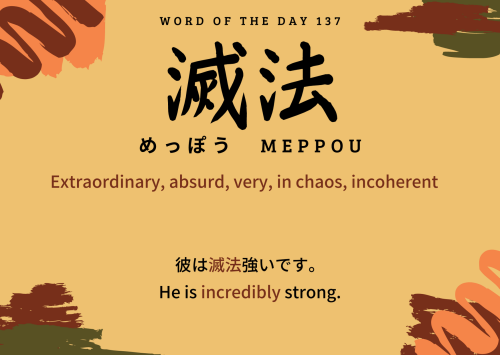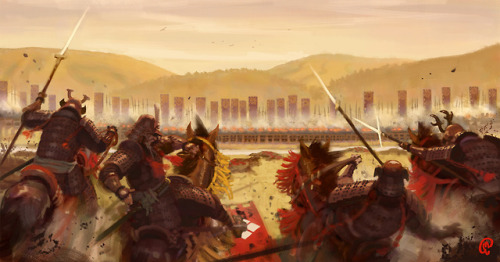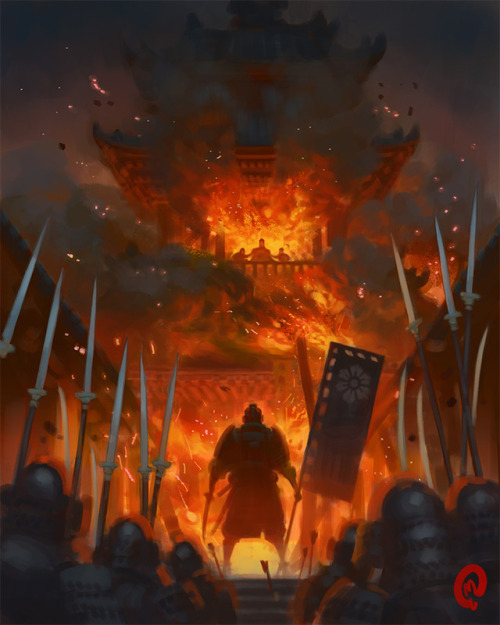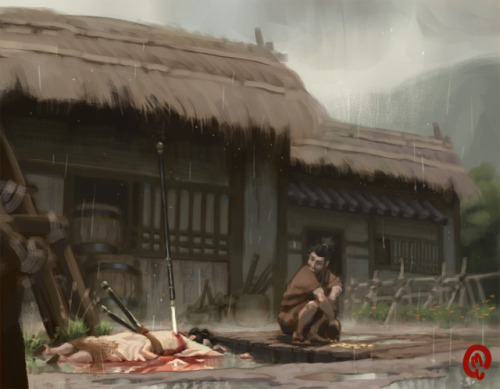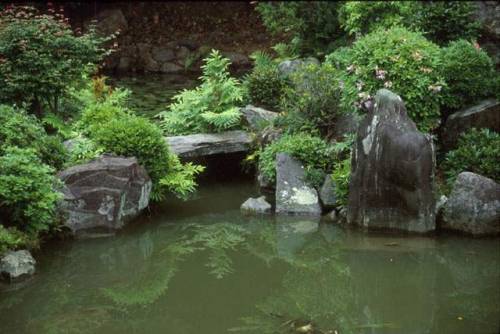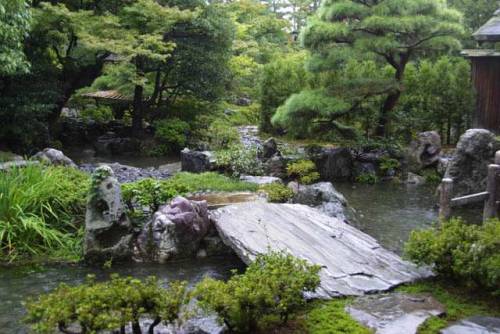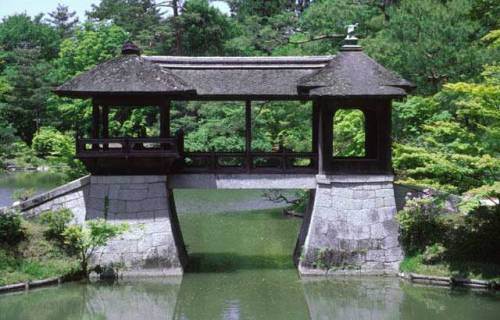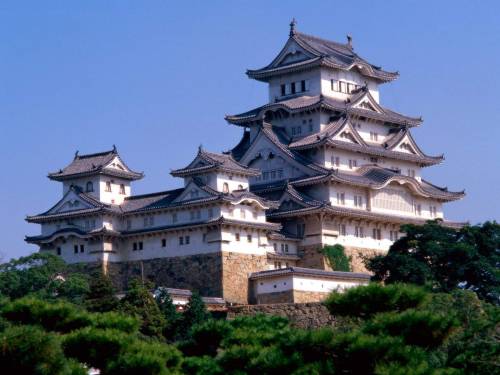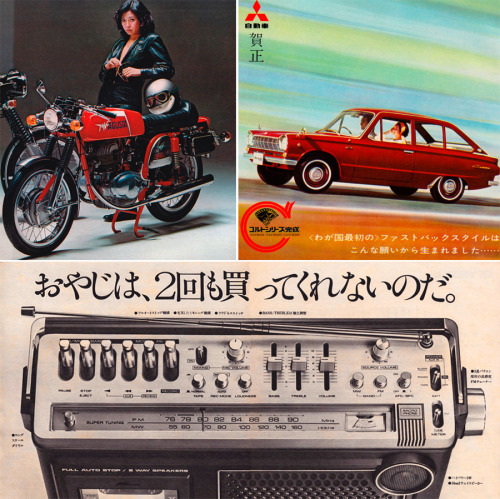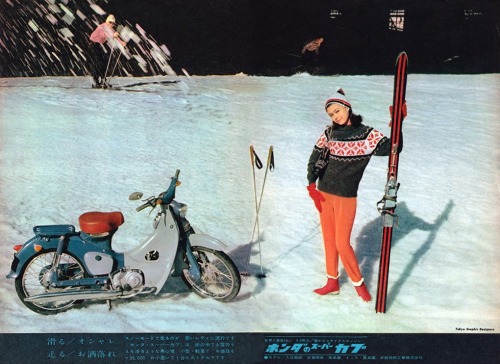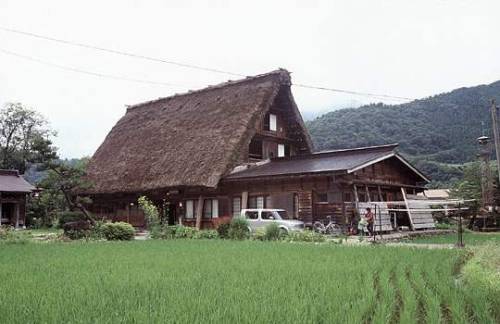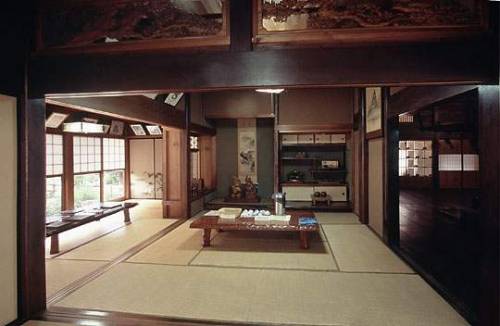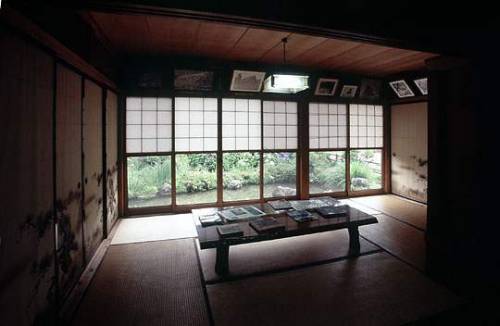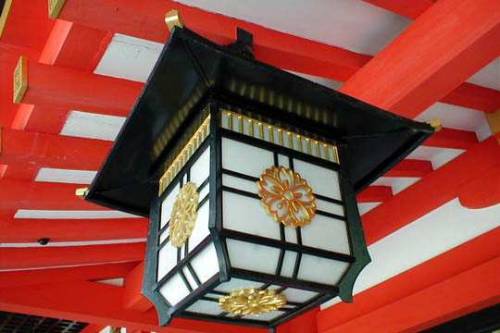#japanese history
JLPT Level: Unlisted, but the kanji are N1 and N3 respectively.
Alright, this is a pretty interesting word that’s seen some changes in meaning and usage over the centuries.
滅
- On-yomi: metsu
- Kun-yomi: horo.biru, horo.bu, horo,bosu
- Meaning: destroy, ruin, overthrow, perish
法
- On-yomi: hou, ha, ho, furan
- Kun-yomi: nori
- Meaning: method, law, rule, principle, model, system
If we put the two together, we get “The Law of Destruction,” which could be a pretty rad metal song.
Originally, this was a Buddhist term used to refer to…something too hard for me to wrap my pea brain around haha. Really trying to remember everything I learned in that one Buddhist Philosophy course I took in uni back in the day.
Okay okay. Basically, all things in existence are divided into two categories:
- Conditioned existence (a.k.a. things created by fate). This is known as saṃskṛta in Sanskrit.
- Those that have transcended conditioned existence. This is known as asaṃskṛta in Sanskrit.
Meppou is the old Japanese Buddhist term for “things that have transcended conditioned existence.” This can mean that a thing has reached Nirvana, something that is “absolute.”
From that meaning, meppou came to mean something “extraordinary” or “terrible and intense” like a historic typhoon.
Most of the time, meppou is used in the phrase 滅法強い meppou tsuyoi, “terribly powerful.”
Post link
JLPT Level: N1
Three JLPT words in a row? What is happening?
Okay. I knew going in that this kanji wasn’t going to have a very cheerful etymology because of its meaning, but it’s way, way darker than I had imagined. Brace yourselves for some pretty morbid stuff.
嘆 is made of two parts: 口 (mouth) and 漢 without the ⺡. Generally, 漢 represents “China.” But not in this kanji. Ohhhhh no. Strap yourselves in.
In ancient Japan, many different sacrifices were made to different gods, and when there were famines due to drought, miko (Shinto shrine priestesses) were burned alive as human sacrifices.
The 漢 part of this kanji represents 旱魃 Kanbatsu, which can mean either “drought” or “the God of Drought.”
So if you put mouth 口 and the God of Drought 漢 without the ⺡together, you get, “a cry to the God of Drought.”
Nowadays, I would say that almost no Japanese people know about the dark rituals this kanji alludes to. This word is used most often for grieving or mourning, though, so there is still a connection to death.
Post link
Worldbuilding: Folk of the Boundaries
Some people make a living out of living on the edge. Between the sea and inland; between the estuary and the river; between the desert and the last green grazing land. Living on the edge takes specific skills and attention to detail. But if you have those skills, you can make a living those dwelling well away from the edge can’t.
This can make for interesting lives, and even more interesting stories.
One of the most intriguing edges, of course, is the boundary between two or more cultures. This may or may not be two or more countries. Nomads tend to have mobile nations, and ships from anywhere might show up in a seaport that still belongs solidly to one country….
Maybe.
Some places are a bit edgier than others. Especially seaports, or other major trading centers. Trade happens because people want things they don’t have. When that level of “want” gets to Country A eyeing specific things Country B has, people living on the edge between can get a bit… squeezed.
All kinds of things can happen on a boundary. Crime, espionage, cultural adaptation and adoption. Those last are intriguing, because they can go multiple different directions at once. Cultures may blend into each other, as people from both sides work together, gripe together, and maybe marry and raise families. Or there may be staunch little OurTowns, where people are far more fiercely Culture A than anyone “back home” - in part so they’re not suspected of being a spy for Culture B. Or possibly both in different social settings; acting like A when you’re around A-natives, B with B-natives, and some odd mix when safe at home. Assuming home is safe. Floods, droughts, and other natural disasters can be somewhat prepared for, but you can never be quite sure when another human will start wondering, whose side are you really on?
An example I’ve looked at lately is Tsushima Island; usually claimed as part of Japan, but about midway between Kyushu and the Korean peninsula. The island’s mostly mountains without good farmland, making trade critically important. And trade they did, through centuries of wars, pirates, shogunal politics, Ming and Qing upheaval, and invasions from either China or Japan.
Part of how they made it work was forgery.
No, really. For example, after Hideyoshi invaded Korea, things were understandably tense. Everyone wanted trade restarted; silver from Japan, silk from China, and ginseng from Korea being three of the big items. Yet nobody was going to make the diplomatic first move of sending a letter apologizing for the war. Because that would mean losing face.
So Lord Sō Yoshitoshi of Tsushima forged one, from the Tokugawa shogun to the king of Korea.
Aaaand it snowballed from there. Opening letters. Closing letters. Seals. Side notes. Tsushima and Korea’s Japanese interpreters forged them all, going both ways. Nobody officially noticed, trade restarted, Tsushima and Korean traders prospered.
It worked (as it apparently had in the past under the Ashitaga shoguns, huh), but if it’d been made public, all kinds of trouble could have landed on Tsushima’s doorstep. Apparently that did happen at least once in the 1630s, with a Sō lord going on trial and suffering penalties from the Tokugawa. (Though not fatal ones.) But one of the reasons it worked is that forging the shogun’s and Korean king’s own seals and diplomatic messages was such a blatant abuse of What You Don’t Do that most people couldn’t believe someone would actually doit.
Take this into account. People of border areas may be seen as shifty and untrustworthy by more conventional members of their culture. With good reason.
If you have nations in your world, or even city-states, you’re going to have borders and boundaries. Read up on how they work. Truth can be even stranger than fiction!
Note: Some info gleaned from Japanese-Korean Relations during the Tokugawa Period, a paper by Kazui Tashiro.
Got a lot of practice out of these series of paintings. Tried some new things with composition and paint techniques. Putting them all together chronologically from the Siege of Mt. Hiei to the death of Akechi Mitsuhide. Check the links below for the stories surrounding each image.
1582, The Death of Akechi Mitsuhide
Post link
1582, The Death of Akechi Mitsuhide
After the successful Akechi lead coup against Nobunaga, Mitsuhide claimed himself the new Shogun of Japan. He quickly moved to secure this position by reaching out to allies and the Emperor. However, Mitsuhide’s allies had already begun to separate themselves from him. Outreach to the Emperor was also half-hearted and did not ease a nervous Imperial Court. Nobunaga’s generals who were off fighting during the assassination began their return to deal with the usurper and secure their positions for the oncoming power struggle. As Nobunaga’s retainers closed in, Mitsuhide’s campaign for support quickly deteriorated causing his soldiers to leave by the thousands. He gravely miscalculated Nobunaga’s popularity as the entire country was turning against him.
After four days, Hashiba Hideyoshi, a devout Oda-retainer, caught up to the Akechi army. He managed to sway two other Oda retainers to his side, swelling his forces to 20,000 - twice that of the Akechi army. The two forces met at the Battle of Yamazaki. After just two hours of fighting, the Akechi army was completely routed. Mitsuhide fled the battle and retreated to the nearby village of Ogurusu. As he was fleeing, a bandit lept out from hiding and thrust his spear into him. Mitsuhide had been killed, his reign as Shogun lasting a paltry 13 days.
Though Hideyoshi had avenged Nobunaga’s death, the victory was short lived. All out war was apparent as this sudden power shift completely fractured any sense of stability in Japan. Leaders retreated to their strongholds to plan how best to secure power over the arising conflict.
Post link
1582, Honno-Ji Burns
Nobunaga had consolidated his power over most of Japan and had begun his final push to eliminate what few clans remained. Hashiba Hideyoshi was leading a western assault against the powerful Mori clan. Nobunaga had left to join the campaign, but had stopped at Honno Temple, his usual resting place in the capital of Kyoto. Mitsuhide had been ordered to rendezvous with Hideyoshi to support his efforts. Instead, he was marching towards Honno-Ji with a force of 13,000 men ready to overthrow Nobunaga. As Nobunaga’s generals and armies were all off fighting on different fronts, his only company were servants, bodyguards, court officials, and merchants.
Mitsuhide’s march towards Kyoto went unchecked as he used previous demonstrations in the city as a pretext to belay suspicion. As they crossed the Katsura River, Mitsuhide exclaimed “the enemy awaits at Honno-Ji!” Before sunrise, the temple was surrounded and Mitsuhide had begun his attack. Nobunaga and his company were taken by surprise and could not defend against the sheer number of troops. Rather than give the traitors the satisfaction of his head as a prize, Nobunaga ordered the temple to be burned down. He then committed ritual suicide, his body soon claimed by the flames. So ended the rule of the Demon King, Nobunaga.
Mitsuhide then began his own consolidation of power by claiming himself the new Shogun. However, besides the few holdouts, Japan had been ready to accept an Oda-Shogunate. Peace had begun setting in as quarrelsome provinces and rivals had been pacified. Without Nobunaga, ambition and the desire for power crept back into the land. Mitsuhide’s treacherous act would fracture the entire country, leading to all out war for the next two decades…
Post link
LAHi presents: Seriously Trivial
During the Japanese invasion of Joseon Korea in late 1500’s, the Japanese soldiers killed Korean civilians, including women and children, and took their noses as war trophies. It was a custom in East Asia to take the heads of slain enemies as a war trophy. But because heads were inconvenient to transport back to Japan during wartime, the Japanese took noses and ears of the slain people back to their country. Today, there are various monuments and tombs of those noses and ears. One of the most notable example of those would be Mimizuka in Kyoto.
Source:
“Mimizuka.” Atlas Obscura. November 07, 2010. Accessed October 09, 2017. http://www.atlasobscura.com/places/mimizuka.
Poster by Nic Calilung
Post link
Biwa Fall near Oboke Canyon, Tokushima prefecture (Shikoku island)
Named after a legend that Heike fugitives played the biwa, an old mandarin-shaped guitar from China, to comfort each other in front of the fall. There are many sayings about loser refugees of Heike clan in Shikoku, which founds none in Kyoto, the then capital city in Heian period.
Biwa (Chinese lute)
https://en.m.wikipedia.org/wiki/Pipa
I have seen it only at Nara National Museum’s Annual Shoso-in Treasure Repository Exhibition. I sometimes find them in old tales but I wonder there still exists any player.
The Tale of the Heike
https://en.m.wikipedia.org/wiki/The_Tale_of_the_Heike
There were monk bards for telling/singing the story as playing the biwa in old time. All Japanese are forced to memorize the head part in classical literature class at high school.
大歩危峡近隣の琵琶の滝(徳島県)
平家の落人がこの滝の前で互いを慰めあって琵琶を奏でたところからこの滝の名前が付いたそう。四国では平家の落人伝説の話をちらほら聞く。京都ではまず聞かないので興味深い。
Japanese Bridges
“Depending upon the size and nature of the pond, gardens that include bodies of water with islands generally include bridges connecting the islands with the shore and often with each other. In the Heian Period and probably earlier, some of the bridges of the large boating ponds were arching structures of Chinese inspiration, allowing boats to pass beneath the spans. They could be built of either wood or stone (a wooden arched bridge is called sori bashi, a stone version sori ishibashi).
In later gardens, many of which have ponds that are too small for boats, bridges are often simple slabs of stone used singly or in combinations of two or three spans. These slabs are frequently natural, uncut stones, which together with the upright stones that usually flank the ends of the bridge should be considered part of the general "stone aesthetics” of a garden. In some instances, the bridge is actually part of a dry landscape, spanning only a sand or gravel stream. Other bridge types include simple wooden structures (kibashi) sometimes consisting of logs laid parallel to one another and supported on a truss-work frame, and more elaborate covered bridges that sometimes approach the scale of a pavilion.
The Chinese arched bridge (or “full moon bridge,” engetsukyo in Japanese) also survived into later periods and were sometimes employed in the same garden in which rustic slab bridges were found, but most of these have disappeared.“
Post link
Himeji Castle, about sixty miles west of Osaka, is one of the best preserved 16th century mid-evil castles in Japan.
Post link
FYJH has just undergone a URL change. The blog will now be under the URL Japanese-History.tumblr.com
This change is coming in a package deal of streamlining the theme and attempting to professionalize the blog.
Thank you for your continued support.
Emperor Taishō
On 30 July 1912, upon the death of his father, Emperor Meiji, Prince Yoshihito succeeded him on the throne. The new emperor was kept out of view of the public as much as possible. Having suffered from various neurological problems throughout his life, by the late 1910s, these maladies made it increasingly impossible for him to carry out public functions.
On one of the rare occasions he was seen in public, the 1913 opening of the Diet of Japan, he is famously reported to have rolled his prepared speech into a cylinder and stared at the assembly through it, as if through a spyglass.
Post link
Radioactive Fallout in Hiroshima and Nagasaki
Immediately after the detonation of the Hiroshima (left) and Nagasaki (right) atomic bombs, two types of radioactive fallout were present, initial and residual.
Initial radiation comes from the detonation of the bomb, and immediately effects those in the local vicinity of the blast. The large amount of immediate deaths in the bombings were due to other factors such as flash or flame burns, falling debris, suffocation, etc… and not that of initial radiation. However, in the coming days and weeks following the blasts, about 30-50% of survivors succumb to the extreme amounts of initial radiation their bodies had absorbed.
Residual radiation has a longer lasting effect, and is what sticks (or is formed inside of) physical matter such as soil, buildings, and bodies. Deaths from residual radiation were relatively low due to the lack of a substantial amount of nuclear fallout as seen in other nuclear incidents. The bombs were detonated ~500 meters above street level, maximizing the large scale devastation to buildings, but limiting the amount of radioactive soil thrown into the atmosphere (that would eventually rain back down onto the ground). Most of the residual radiation had been pushed upwards into the mushroom cloud.
The threat of nuclear contamination was relatively low, and didn’t seem to pose a long threat of radiation poisoning as seen in the Chernobyl disaster. Because of this, reconstruction of the cities began only months after the bombings.
Post link
Kanda House (built 19th century)
The Kanda family house is a typical “Gassho-zukuri” style house (a house built in the form of hands steepled in prayer). The house was established in the latter half of the Edo period by Wada Yaemon, the second son of the nearby Wada family (whose house is also a cultural treasure). At that time, the site of the present-day Kanda house was a rice field attached to Ubusuna Hachimangu Shrine. Accordingly, he changed his family name to “Kanda” (“Divine Rice Field”) in homage to the land’s former use. Subsequently, a house was constructed over a period of ten years by a master shrine carpenter from Ishikawa prefecture.
The upper stories of Gassho houses were commonly used for silkworm production, and Kanda house is no exception. The owners also made fuming nitric acid, an ingredient in the gunpowder of the time, as a commodity to trade for cash.
Post link
Ikuta Jinga Shrine
Ikutajinga is a Shinto shrine in Kobe where annual festivities are held commemorating a 12th century war between the Genji and Heishi samurai clans known as the Genpei War.
Post link
My apologies for the extended hiatus. The end of the semester and finals week took top priorities for a while.
I’m currently filling the queue with loads of Japanese history goodies, so if you have any requests on specific content or general time periods- please let me know!
Thanks for your patience.
The city of Fukuoka, capital of Fukuoka prefecture, is considered by many Japanese historians to be the oldest city in Japan due to its relatively close proximity to China and Korea.
Today, Fukuoka is considered “The Tokyo of Kyushu”. The city is now the 7th largest city in Japan, surpassing Kyoto, and has recently been ranked as the 12th of the world’s “most livable cities”.
Post link


